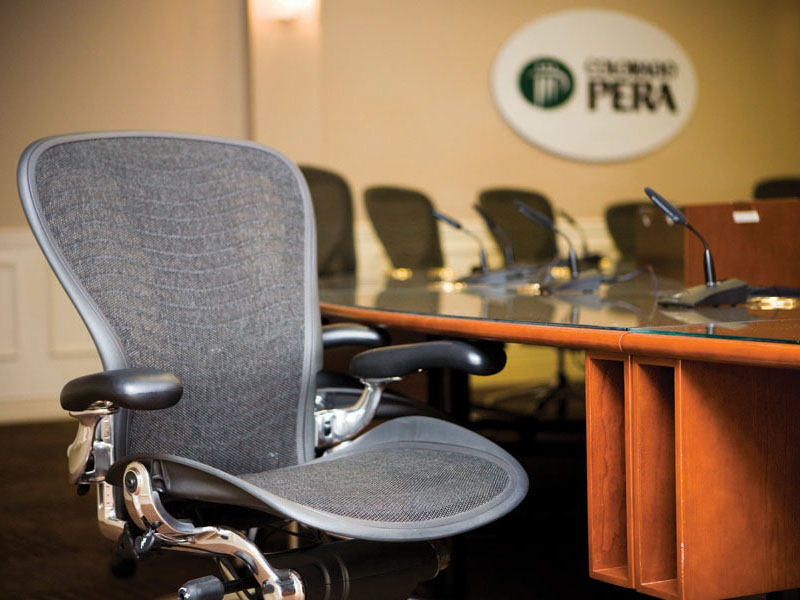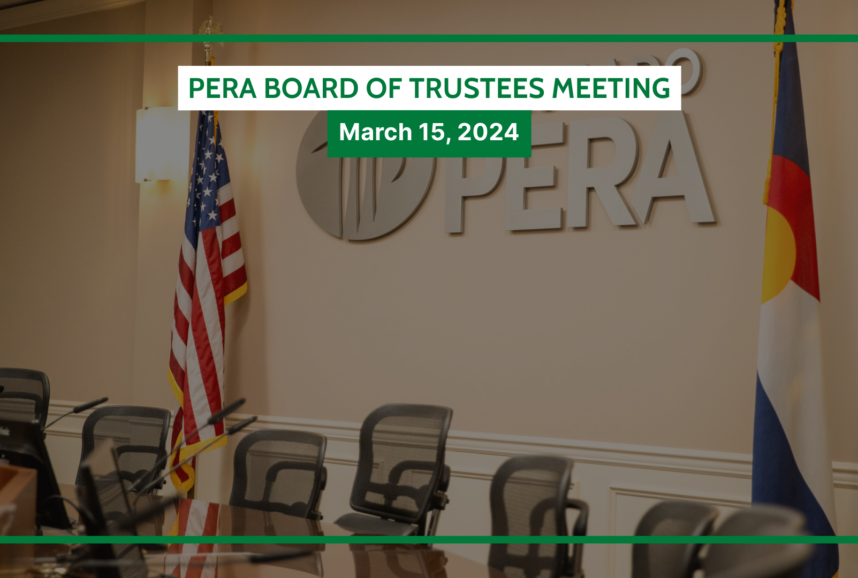Asset allocation is the primary determinant
of any portfolio’s risk, or volatility, and return potential, including PERA’s.
Asset allocation simply refers to the
portion of PERA’s total portfolio that is invested in the five asset classes. The PERA Board
of Trustees regularly revisits the strategic Asset allocation
to determine whether the fund needs to be differently proportioned. A critical
part of that work is called an Asset/Liability Study, which evaluates the
relationship of the plan’s assets and liabilities, as well as the plan’s risk
tolerance.
The Board’s investment consultants, Aon,
began the latest Asset/Liability Study in late 2018 and recently provided its findings
at the Board Planning Session earlier
in September.
The key objective of the Asset/Liability
Study is to identify the appropriate risk posture for the portfolio in the
context of the liabilities of the portfolio, or the right level of risk for the
overall portfolio of assets. Making this determination requires three key
decisions: the overall mix between return-seeking and risk-reducing assets; the
composition of the return-seeking portfolio; and the composition of the
risk-reducing portfolio.
The Board is expected to use the results of
the Asset/Liability Study, the timing of projected cash outflows, and overall
risk tolerance of the fund in order to determine a strategic Asset allocation
later this fall.
be seen here.]
Reevaluating its strategic Asset allocation
every three to five years, as PERA does, is a best practice for institutional
investors and a cornerstone of prudent governance of a pension plan. The
updated Asset allocation policy will provide guidance on the most appropriate
mix of assets to be held in the PERA Trust Funds in order to meet the future
financial needs of the plan for the sole benefit of its members and retirees.
Also included in the Asset/Liability Study is
information about key assumptions and possible alternative portfolio
compositions:
- Long-term
capital market expectations for a variety of
asset classes are used to model different Asset allocation based on Aon’s
expectations. Since PERA is a long-term investor, it relies on long-term
assumptions about how the capital markets will perform and economic
environments will shift. - Risk
and performance expectations with different Asset allocation. Aon’s
analysis looked at a range of combinations of different asset classes in a
variety of weights, including global equity, fixed income, private equity, real
estate, private debt as well as asset mixes designed to mitigate risk. Aon
generally favors careful diversification into a broad set of asset classes with
attractive risk and return properties to improve portfolio efficiency, and its
specific analysis for PERA has been customized to reflect PERA’s particular
needs and circumstances.
Additional information from the presentation
of Aon to the Board at its September Planning Session can be found here.
As the Board continues the process of
refining the analysis of the Asset/Liability Study and developing its updated
strategic Asset allocation, PERA on the Issues will continue to provide new
information on the Board’s conclusions.
Global equityA type of investment that includes publicly traded stocks in companies based in the United States and abroad.Asset classesA category of similar investments. Common asset classes include global equity (such as publicly traded stocks), real estate, and cash.Asset allocationAn investor’s mix of stocks, bonds, and other investments. PERA’s strategic asset allocation is set by the PERA Board of Trustees.Asset allocationAn investor’s mix of stocks, bonds, and other investments. PERA’s strategic asset allocation is set by the PERA Board of Trustees.Asset allocationAn investor’s mix of stocks, bonds, and other investments. PERA’s strategic asset allocation is set by the PERA Board of Trustees.Asset allocationAn investor’s mix of stocks, bonds, and other investments. PERA’s strategic asset allocation is set by the PERA Board of Trustees.VolatilityA state of unpredictable activity in financial markets, during which prices can experience significant and/or unexpected swings in either direction. Private equityA type of investment in which investors purchase shares of a company that is not traded on a public stock exchange.Fixed incomeA type of investment that pays investors a fixed rate of interest over a set period of time. Bonds are a common type of fixed income investment.Asset classA category of similar investments. Common asset classes include global equity (such as publicly traded stocks), real estate, and cash.





Looking at the a picture for this article aggravates me. Why on earth would our association spend our money on $1,400 chairs (https://store.hermanmiller.com/office/office-chairs/aeron-chair/2195348.html?lang=en_US&😉 which are not used very heavily?
MGB — thank you for raising this issue. Responsible stewardship of our members’ dollars is very important to PERA. I was able to confirm that the chairs were purchased at a fraction of the price listed here. – Laura